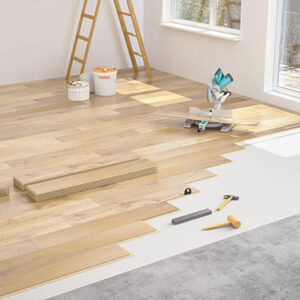Once a home has been lived in long enough, its flooring will have to be replaced. This is true of every home and every type of flooring. And it’s something you’ll have to keep in mind if you purchase a home and plan to live there forever.
Of course, there’s a whole other type of buyer who moves into a new home with the express purpose of only living there for a few years before moving on. Those sorts of homeowners face an entirely different set of questions when choosing flooring. They have to balance their own preferences against those of the market in which they’ll be selling when they move out.
They also have to consider whether to install durable flooring in the first place, in hopes it will still be like new when they’re leaving, or whether to take it for granted that they’ll be having flooring installed both at the start and at the end of their residency.
Each of these questions is potentially daunting. They threaten to make the homeowner self-conscious about every step they take, for fear of either incurring the cost of a new floor or damaging something that will be central to someone else’s sense of place in the future. That kind of hyper-awareness doesn’t make for a very homey feeling.
If you ever find yourself torn between prolonging the life of a floor and getting the full enjoyment out of it for as long as you’re using it, we have a recommendation for you. Depending on your aesthetic preferences, it may actually be possible to get the best of both worlds by installing vinyl planks on top of a preexisting floor.
That installation process usually involves simply snapping the planks together like puzzle pieces, with protective pads underneath. The pads should prevent any wear and tear on the underlying floor, even if the vinyl planks shift while you stomp and dance on them to get the full enjoyment of your home.
If you install vinyl over top of hardwood, you may find that you have very nearly the same experience as you would with the original flooring, all while keeping it absolutely pristine. Vinyl alternatives have become more and more sophisticated over the years, to the point at which they’re able to very convincingly emulate hardwood.
Of course, many people still have a strong preference for the real deal, so by keeping hardwood flooring as good as new, you may be able to fetch a higher price when it’s time to leave. And then, if your vinyl planks haven’t taken as much abuse as you anticipated, you can even carry them straight to your new home, reinstall them on your own, and repeat the whole process over again.
